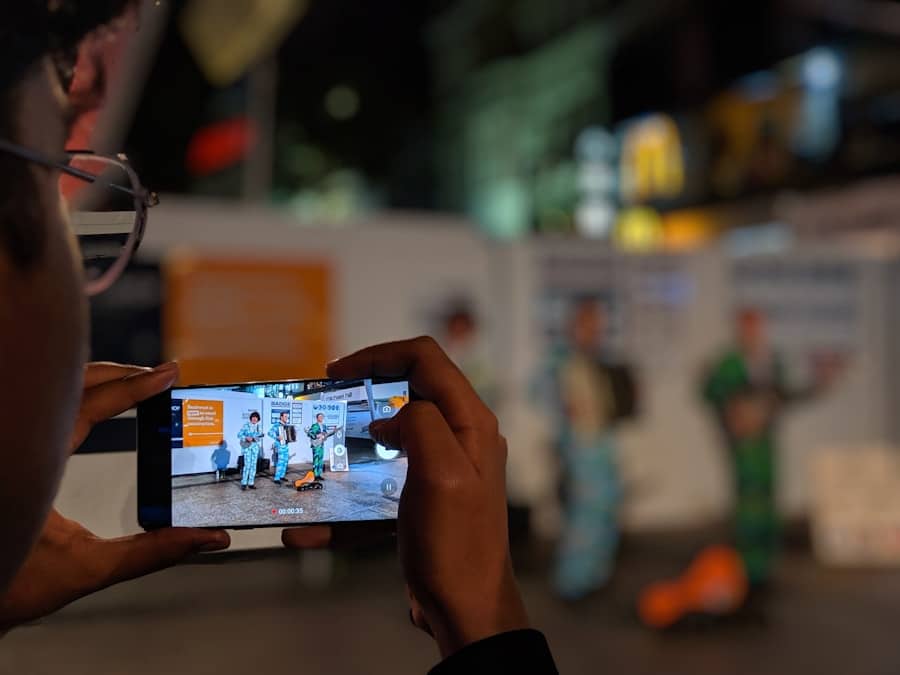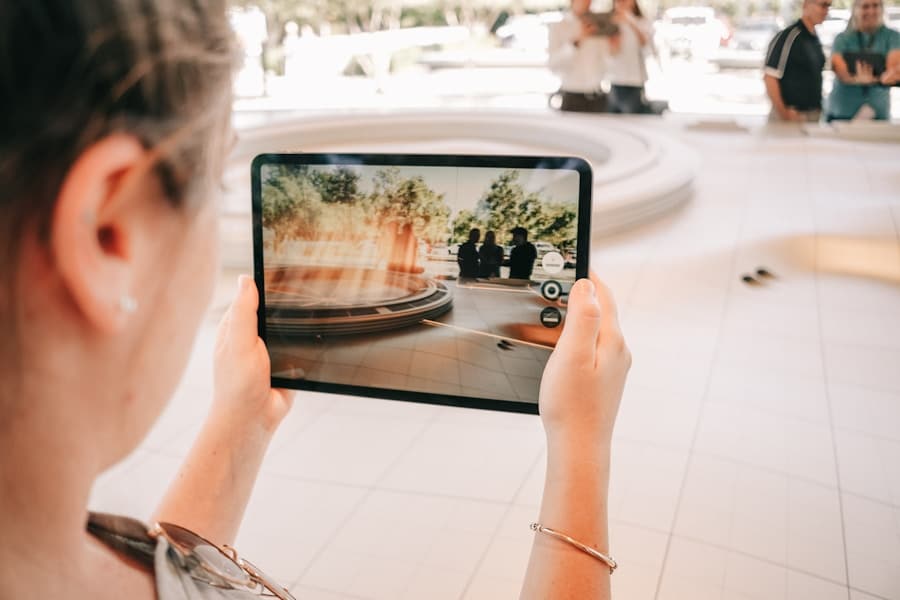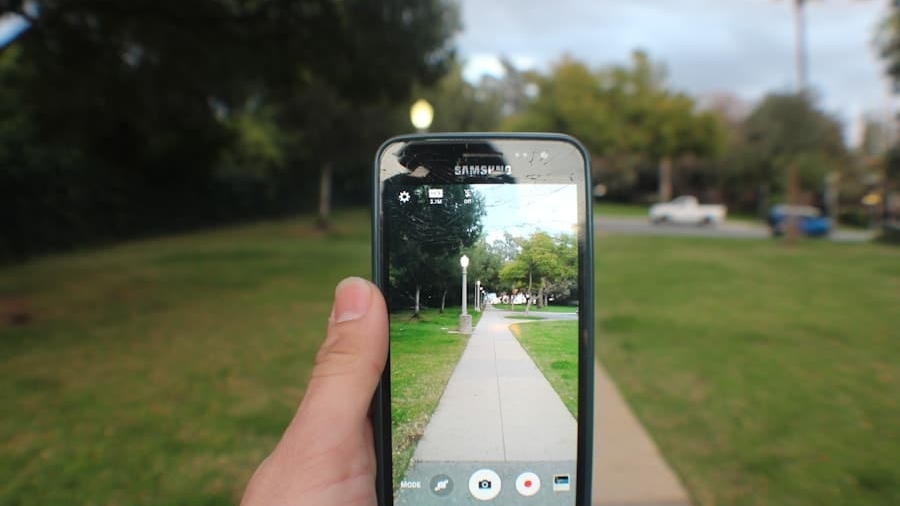Augmented Reality (AR) and Virtual Reality (VR) are two transformative technologies that have gained significant traction in recent years. While both technologies create immersive experiences, they do so in fundamentally different ways. AR overlays digital information onto the real world, enhancing the user’s perception of their environment.
This can be seen in applications like Pokémon GO, where virtual creatures appear in real-world settings through a smartphone screen. On the other hand, VR immerses users in a completely virtual environment, often requiring specialized headsets that block out the physical world. This technology is widely used in gaming, training simulations, and therapeutic applications, providing users with experiences that can be both entertaining and educational.
The convergence of AR and VR with various sectors, including education, healthcare, and entertainment, has opened up new avenues for interaction and engagement. As these technologies continue to evolve, their potential to enhance accessibility for individuals with disabilities becomes increasingly apparent. By leveraging AR and VR, developers can create experiences that cater to diverse needs, breaking down barriers that have traditionally hindered access to information and services.
This article explores the profound impact of AR and VR on accessibility, examining how these technologies can enhance digital content for people with disabilities and promote inclusivity in various domains.
Key Takeaways
- AR and VR are immersive technologies that have the potential to enhance accessibility for people with disabilities.
- These technologies can improve digital content for people with disabilities by providing new ways to interact and experience information.
- AR and VR have a crucial role in making digital content more inclusive by offering alternative ways of accessing and understanding information.
- Examples of AR and VR applications for accessibility include virtual tours for people with mobility impairments and augmented reality apps for people with visual impairments.
- While there are challenges in implementing AR and VR for accessibility, there are also opportunities for these technologies to improve the overall accessibility of digital content in the future.
The Impact of AR and VR on Accessibility
The impact of AR and VR on accessibility is profound, as these technologies offer innovative solutions to longstanding challenges faced by individuals with disabilities. Traditional methods of accessing information often fall short for those with visual impairments, hearing loss, or mobility challenges. However, AR and VR can provide alternative means of interaction that are more intuitive and engaging.
For instance, AR applications can use audio cues and haptic feedback to guide visually impaired users through physical spaces, allowing them to navigate environments with greater confidence. This not only enhances their independence but also fosters a sense of belonging in public spaces. Moreover, VR can simulate environments that may be difficult for individuals with mobility impairments to access in real life.
For example, a person who uses a wheelchair may find it challenging to visit historical sites or natural wonders. Through VR experiences, they can explore these locations virtually, gaining insights and knowledge without the physical limitations imposed by their condition. This capability not only enriches their understanding of the world but also promotes social inclusion by allowing them to participate in shared experiences with friends and family.
How AR and VR Enhance Digital Content for People with Disabilities

AR and VR technologies have the potential to revolutionize how digital content is created and consumed by people with disabilities. By integrating these technologies into educational materials, entertainment platforms, and everyday applications, developers can create more engaging and accessible experiences. For instance, educational institutions can utilize AR to provide interactive learning experiences for students with learning disabilities.
By overlaying visual aids or interactive elements onto traditional textbooks, students can better grasp complex concepts through multisensory engagement. In the realm of entertainment, VR can offer immersive storytelling experiences that cater to diverse audiences. For individuals with hearing impairments, VR applications can incorporate sign language interpreters or visual storytelling techniques that convey narratives without relying solely on audio cues.
This approach not only makes content more accessible but also enriches the storytelling experience by allowing creators to explore new ways of conveying emotions and themes.
The Role of AR and VR in Making Digital Content More Inclusive
Inclusivity is a critical consideration in the development of digital content, and AR and VR technologies play a pivotal role in achieving this goal. By designing applications that prioritize accessibility from the outset, developers can ensure that individuals with disabilities are not left behind in the digital age. For example, AR applications can be designed with customizable features that allow users to adjust text size, color contrast, or audio settings according to their preferences.
This level of personalization empowers users to tailor their experiences to meet their unique needs. Furthermore, VR environments can be designed to accommodate various sensory sensitivities. For individuals on the autism spectrum, certain visual or auditory stimuli may be overwhelming.
Developers can create adjustable settings within VR experiences that allow users to modify sensory inputs, ensuring a comfortable and enjoyable experience. By prioritizing inclusivity in design, AR and VR technologies can foster a sense of belonging for all users, regardless of their abilities.
Examples of AR and VR Applications for Accessibility
Numerous examples illustrate how AR and VR applications are being utilized to enhance accessibility for individuals with disabilities. One notable application is Microsoft’s Seeing AI, an app that uses AR technology to assist visually impaired users in navigating their surroundings. The app employs computer vision to identify objects, read text aloud, and even describe scenes in real-time.
In the realm of VR, applications like Oculus Venues provide immersive social experiences for individuals who may struggle with social interactions in real life. Users can attend virtual concerts or events from the comfort of their homes while engaging with others through avatars.
This not only offers entertainment but also fosters social connections that may be challenging for individuals with social anxiety or mobility limitations.
Challenges and Opportunities in Implementing AR and VR for Accessibility

While the potential benefits of AR and VR for accessibility are significant, several challenges must be addressed to fully realize this potential. One major hurdle is the need for developers to prioritize accessibility during the design phase of applications. Often, accessibility features are added as an afterthought rather than being integrated into the core functionality of the product.
This oversight can lead to missed opportunities for creating truly inclusive experiences. Additionally, there is a need for increased awareness and education among developers regarding the specific needs of individuals with disabilities. Understanding the diverse range of disabilities and how they impact user interactions is crucial for creating effective solutions.
Collaborating with disability advocacy organizations can provide valuable insights into user needs and preferences, ultimately leading to more successful implementations of AR and VR technologies.
The Future of AR and VR in Enhancing Accessibility in Digital Content
Looking ahead, the future of AR and VR in enhancing accessibility appears promising as technology continues to advance at a rapid pace. Innovations such as eye-tracking technology and advanced gesture recognition are paving the way for more intuitive interactions within virtual environments. These advancements could enable individuals with limited mobility or dexterity to navigate digital content more easily, further breaking down barriers to access.
Moreover, as awareness of accessibility issues grows within the tech community, there is an increasing push for inclusive design practices across all sectors. This cultural shift is likely to lead to a greater emphasis on developing AR and VR applications that prioritize accessibility from the outset. As more organizations recognize the importance of catering to diverse audiences, we can expect a surge in innovative solutions that enhance the digital experience for individuals with disabilities.
The Importance of Prioritizing Accessibility in AR and VR Development
The integration of AR and VR technologies into our daily lives presents an unprecedented opportunity to enhance accessibility for individuals with disabilities. By prioritizing inclusive design practices and actively seeking input from diverse user groups, developers can create applications that not only meet regulatory standards but also foster genuine engagement and participation among all users.
Embracing this responsibility will not only enrich the lives of individuals with disabilities but also contribute to a more equitable society where everyone has the opportunity to thrive in an interconnected world.
A related article discussing the best laptops for Blender in 2023 can be found here. This article provides insights into the top picks and reviews for laptops that are ideal for running Blender software, which can be beneficial for individuals looking to create immersive AR and VR experiences. By using high-performance laptops, content creators can enhance accessibility in digital content by developing more engaging and interactive experiences for users.
FAQs
What is AR and VR?
AR stands for Augmented Reality, which is a technology that superimposes a computer-generated image on a user’s view of the real world. VR stands for Virtual Reality, which is a computer-generated simulation of an environment that can be interacted with in a seemingly real or physical way.
How do AR and VR enhance accessibility in digital content?
AR and VR enhance accessibility in digital content by providing immersive and interactive experiences for users with disabilities. These technologies can be used to create inclusive content that accommodates various needs, such as visual impairments, by providing audio descriptions or tactile feedback.
What are some examples of how AR and VR are used to enhance accessibility?
AR and VR are used to enhance accessibility in various ways, such as creating virtual tours of physical spaces for individuals with mobility impairments, providing interactive learning experiences for students with learning disabilities, and offering immersive experiences for individuals with sensory impairments.
What are the benefits of using AR and VR for accessibility in digital content?
The benefits of using AR and VR for accessibility in digital content include increased engagement and participation for users with disabilities, the ability to customize experiences to accommodate specific needs, and the potential to create more inclusive and equitable digital content for all users.
Are there any challenges or limitations to using AR and VR for accessibility?
Some challenges and limitations to using AR and VR for accessibility include the need for specialized equipment, potential barriers to access for individuals with certain disabilities, and the requirement for content creators to consider a wide range of accessibility needs when designing experiences.

